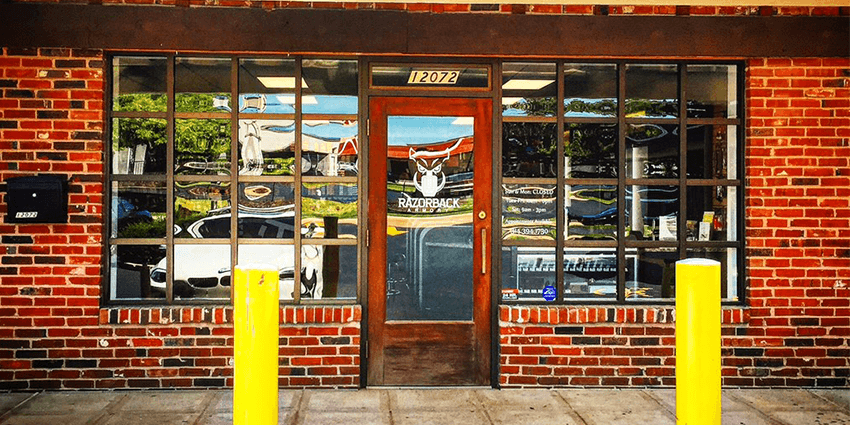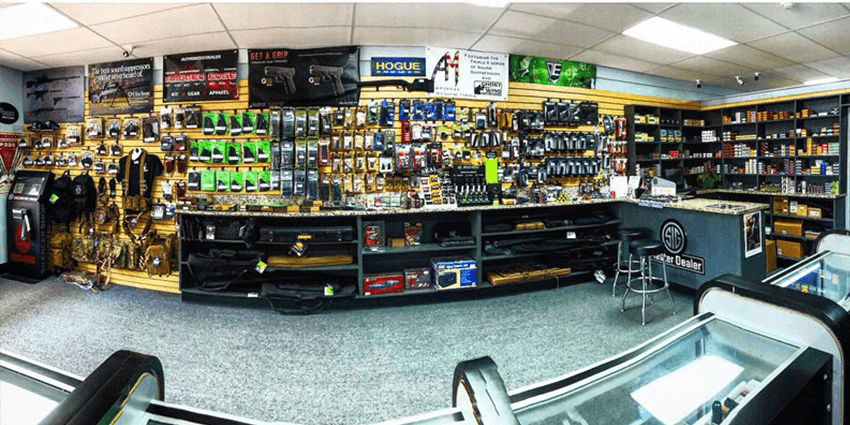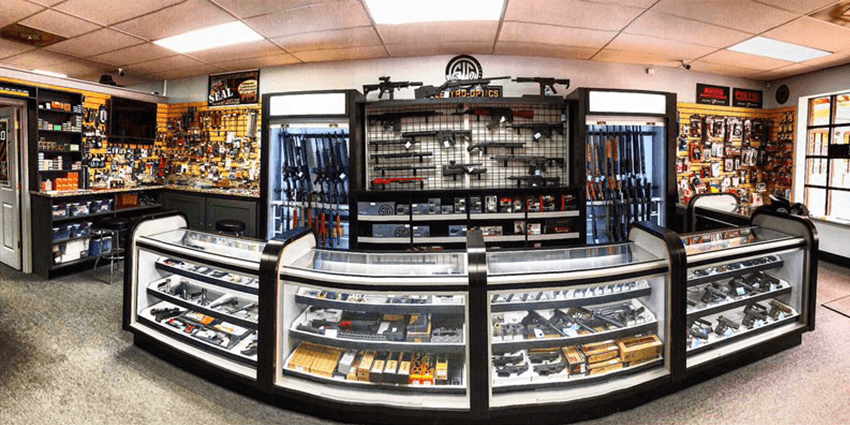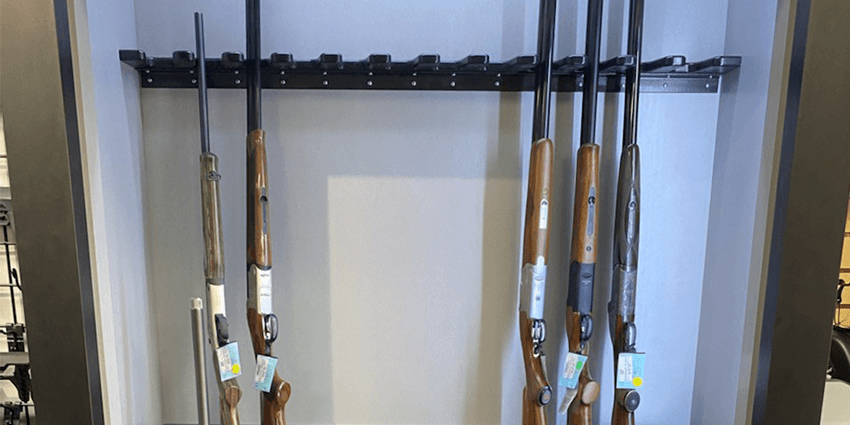 Back to News
Back to News
March 25, 2020
Razorback Armory: How to Handle the Influx of New Customers During Crisis
“From the Counter” is the NSSF timely industry perspective from firearm retailers across the country. Our goal is to identify and highlight innovative market strategies helping retailers compete more successfully. Lessons learned are drawn from an array of regions with diverse market economies. For this column, we spoke to a small, suburban St. Louis store on Sunday, March 22, 2020—the day the city issued a stay-at-home order in response to the coronavirus pandemic.
Razorback Armory, Des Peres, Missouri
Located in west suburban St. Louis County, Razorback Armory has been open for five years. It specializes in general hunting guns, with an emphasis on its own custom MSR and 1911 buildouts. The store stocks about 300 new and used firearms, with an even mix of long guns, handguns and custom demo MSRs.

Razorback Armory is staffed with three fulltime employees. Typically, the store is open Tuesday through Saturday. We interviewed Jay Rolfes, partner, on Sunday, March 22, 2020. He had come in to catch up on orders and NICS checks. Just two hours prior to our phone call, the St. Louis metro area was issued a volunteer stay-at-home order.
Confronting 2020’s St. Patrick’s Day Rush
On St. Patrick’s Day, March 17, Jay Rolfes was attending at a mandatory Glock technical training meeting at a local police station—but his phone would not stop buzzing.
“I had my phone set on silent, but it continually shook. Everyone else in the tech meeting was experiencing the same thing. Within a few hours, I had received more than 300 Facebook Messenger texts and 100-plus calls,” said Rolfes.

The week before, news of the coronavirus outbreak had been escalating, and in that week alone, Rolfes’ store had seen about a 15-percent increase in traffic. When the stay-at-home order came, Rolfes told me, “At that point, I just knew—everything we had known—had just changed.”
While he was in the Glock training, the store saw its first line trailing outside the door. The demand for pump shotguns, pistols, modern sporting rifles (MSRs) and .223 and 9mm ammo was fierce. The next day, the store started seeing customers they had never seen before.
A Crisis Shifts the Customer Base
“Our typical customer is an experienced shooter interested in higher-grade rifles and pistols. We also do a great deal of purchasing and custom work for several local police departments,” said Rolfes.

The new customers walking through the door were not what he was used to. Instead of his mostly male, mostly white and older clientele, now he was presented with a mix of men and women from diverse nationalities. Rolfes said he found it remarkable that most of them had never had a gun in their home before. In fact, most said they had been scared to come into a gun store but were motivated by the prevailing circumstances to consider purchasing a firearm for the first time.
“We really wanted this to be a good experience for these new customers. We did everything we could to calm their fears,” said Rolfes. “We also wanted to instill a sense of responsibility as a new firearm owner; all our guns are sold with factory locks, and the majority of them are sold with a lockbox or a safe.”
“We make it a point not to hurry these new customers through the purchase, and we are committed to giving them a clear understanding of what it means to be responsible gun owners,” he emphasized. “We recommend trainers, area ranges and state public-shooting facilities. We also do our best to encourage their participation in the shooting sports—we don’t want them to make the purchase just out of fear.”
“No Price-Gouging” Commitment
Razorback Armory has kept a strict commitment to maintaining the standard markup on all SKUs. It plans to raise prices only if distributors raise prices.
“Unfortunately, I’ve seen price-gouging scenarios play out several times in the last decade. I’ve seen instances where a dealer sells a $500 gun to a customer for $900. You know what? A customer won’t forget that—ever. I don’t want any part of that,” Rolfes said.
That approach is paying off, with heavy traffic a result of the store’s reputable standing. Still, with that heavier store traffic, especially one that included a great many first-time buyers, conducting background checks and keeping up with ordering have been challenging.
“At our store, we already had a daily ordering process in place. The difference now is that we’re calling distributors and reps twice or more a day. NICS checks were working [quickly] up until last Friday. To meet the uptick in demand, we have been staying late to close out the day’s background checks, even if it means filing late into the night,” he said.
By Thursday, March 19, the store had put ammo limits in place. “To be fair to all, we began limiting hollowpoints to one box, ball ammo to three boxes and bulk ammo to 500 rounds,” Rolfes said.

During our Sunday conversation, Rolfes said his inventory was down to just five over/unders, a few very expensive 1911s and a dozen or so hunting rifles.
The store planned to partially close from March 23 through March 30 to catch up on background checks, transfers and receive new inventory. The week would also be used to completely clean and disinfect the store, and a few small building projects will also take place.
“We want to be ready to reopen the store with greater confidence and safety. Only clients who are being serviced with an active order, like closing a NICS check, a transfer or a special order, will be allowed in the shop this week. We will maintain safe social distances and follow up by wiping down all surfaces after every customer,” he said.
Rolfes added that he hopes safety protocols will not be elevated in the St. Louis area. “We don’t want to be shuttered. We can stay open now, but we need to be responsible. We will continue to take serious precautions to protect our customers and our staff. We realize that, if the situation worsens, we may have to close for up to a month,” Rolfes said.
Adjusting to the New Normal
While the events of the St Patrick’s Day rush were a surprise to this retailer, he found it comforting that the store’s inventory-control protocols were in place and working. In addition, by approaching new, unsettled customers with a calm demeanor, stress levels among the staff decreased and customers’ fears were eased. “There was no yelling. People were calm because we explained how we would service them and how much we appreciated their patronage,” Rolfes said.
Lessons Learned from the Counter
Keeping Calm—While customers were waiting, this retailer kept them informed and answered questions. In turn, waiting customers knew what to expect. Since they understood the store would meet their needs, stress was reduced for all.
Fostering New Shooters—Rolfes said that firearms purchased out of fear was not how he wanted to see the firearm industry gain new shooters. He encouraged his new customers to be engaged in the shooting sports and follow rigid safety standards.
Tightening Inventory Control—Because this store already daily order processing in place, the surge in sales was easier to manage in the early stages. Daily phone contact with distributors keeps the store informed. It also provides access to inventory that may not be available if distributors are contacted once a week for an order.
You may also be interested in:
https://www.nssf.org/protecting-your-firearms-business-and-the-public-during-a-crisis/
Categories: BP Item, Featured, Retailers, Top Stories









